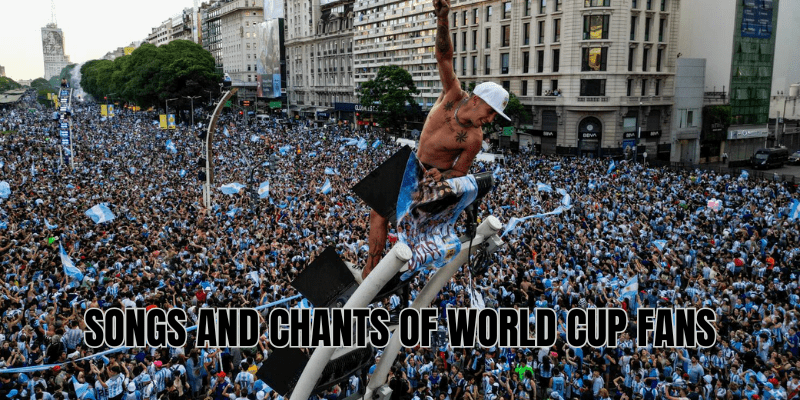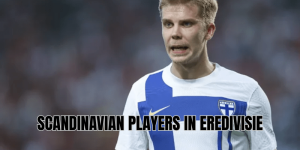The heartbeat of songs and chants of World Cup fans is the invisible tide that sweeps through every match. When tens of thousands of voices rise in sync, weaving national pride, emotion, rivalry, and passion, it becomes something much greater than noise—it becomes legend. In this article, CantoKick will take you on a vibrant journey through the history, iconic anthems, regional styles, and living traditions of fan soundtracks at the world’s biggest football festival.
The Roots Of Fan Chants And World Cup Anthems
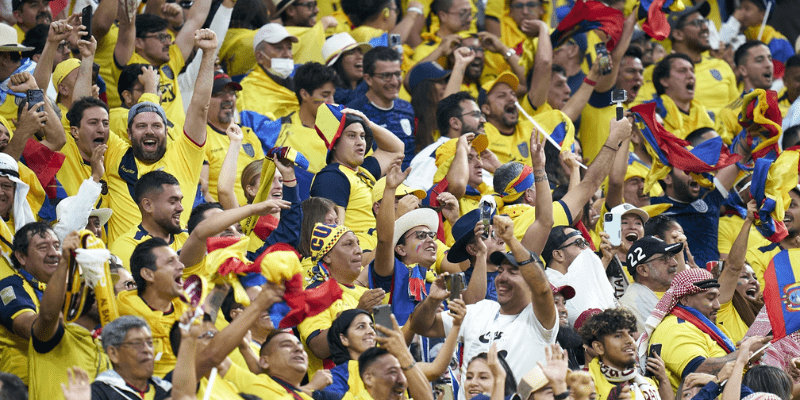
Before the age of social media, stadium acoustics and simple melodies shaped the way supporters expressed themselves. The tradition of songs and chants of World Cup fans has two intertwined strands: official tournament songs and grassroots supporter chants.
Evolution of official World Cup songs
Starting in 1962, FIFA and host nations began commissioning official songs tied to the tournament vibe—“El Rock del Mundial” (Chile, 1962) is often cited as the first of such anthems. Over decades those songs evolved to blend pop, local rhythms, and global appeal.
In 1998, Ricky Martin’s “La Copa de la Vida” introduced a new benchmark—catchy, danceable, woven into broadcasts and stadiums alike. Later entries like Shakira’s “Waka Waka (This Time for Africa)” and “Dar um Jeito (We Will Find a Way)” in 2014 pushed the envelope further, merging local genres with universal appeal.
Yet these official tracks are only one side of the story—they often set a soundtrack for TV and opening ceremonies, while fan-driven chants provide the living soundscape inside stadiums.
Birth of universal chants
One chant that transcended borders is “Ole, Ole, Ole”. Its origin traces to a Belgian song (“Allez, Allez, Allez”) which morphed into the “Ole, Ole, Ole” chant during the 1986 World Cup in Mexico. This organic adaptation is at the heart of how songs and chants of World Cup fans remain fresh yet timeless.
Iconic Chants And Their Stories
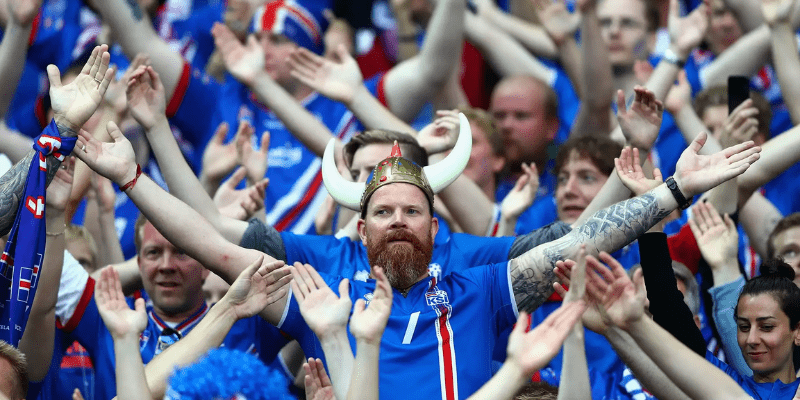
Here are some of the chants that have defined World Cup atmospheres:
“Ole, Ole, Ole”
Now almost synonymous with football in popular culture, this chant’s roots lie in a Belgian tune. Its simplicity—three syllables chanted repeatedly—makes it perfect for mass voice unison. It’s a chant of pure affirmation, no matter the language.
Viking Thunder Clap
The Viking Thunder Clap (or “Viking Clap”) rose to global fame with Iceland’s 2016 European Championship run—and carried strongly into the 2018 World Cup. The synchronized clap-and-shout pattern grows in speed, building tension in a stadium. Many nations adopted variants of it during subsequent tournaments.
“I Believe That We Will Win!”
Originally a U.S. collegiate chant, this call-and-response grew into a staple for U.S. soccer fans (especially at World Cups). The structure—“I / believe / that / we / will win!”—makes it emotionally resonant and unifying.
Rival-specific or taunt chants
Some chants are born from rivalry and one-upmanship. For example, Argentine fans sang a version of “Bad Moon Rising” reworked to mock Brazil during World Cups, demanding: “How does it feel to have daddy in your house?” Meanwhile, Mexico fans developed a one-word chant targeted at opposing goalkeepers, leading to an investigation by FIFA.
National anthems turned chants
Some nations transform their own anthems or folk songs into chants. Supporters may loop a line, change tempo, insert names of star players, or chant the national motto—turning official symbols into a live, evolving chant.
“Freed From Desire / Will Grigg’s On Fire”
Originally a 1990s dance track, “Freed from Desire” became a chant phenomenon during Euro 2016 when Northern Ireland fans adapted it to “Will Grigg’s on fire / your defense is terrified.” Its contagious melody made the chant cross over into World Cups and club matches globally.
Regional Styles And Unique Traditions
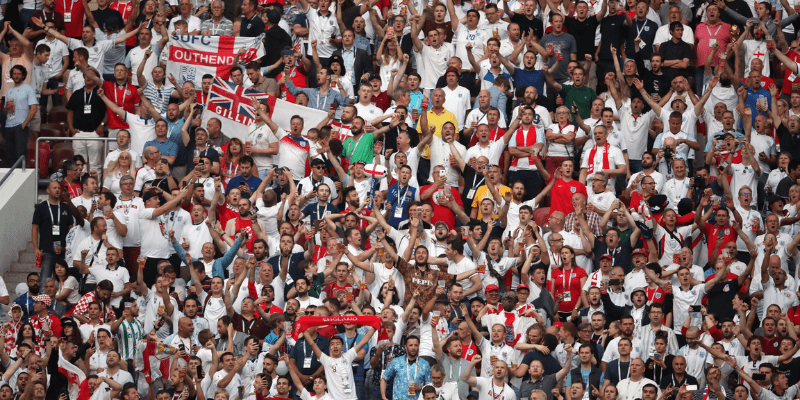
The way fans chant at World Cups varies drastically by culture. Below are snapshots of some vibrant traditions:
Latin America & South America
Expect percussion drums, horns, rhythmic claps, and dense layers of chants. In South America, supporters often string together corridos or raps lauding the team, players, or historical victories. Brazilian fans, in particular, mix samba rhythms with football chants. Argentine fans adopt dark humor and bold lyricism in long chant suites that can last entire matches.
Europe
In Europe, chants often reflect club terraces backgrounds. British-style chants borrow pop or punk tunes (e.g., “Vindaloo” in England’s 1998 campaign), while Balkan nations might integrate folk harmonies and call-and-response. Iceland’s Viking Clap is a high-water mark in European chanting innovation.
Africa
Fans in Africa bring polyrhythms, drums, and energetic group singing. In many matches, fans will lead chants as a marching procession into stadiums. Local languages, call-response in native tongues, and chants honoring national legends are all hallmarks.
Asia & Middle East
These regions often incorporate traditional musical scales, percussion (daffs, tambourines), and chants mixing English and local languages. The 2022 anthem “Tukoh Taka” (by Nicki Minaj, Maluma, and Myriam Fares) blended English, Spanish, and Arabic to appeal broadly across the host region.
How Chants Impact Matches (And Why They Matter)
Psychological pressure
When 50,000 voices roar in rhythm, the psychological toll on visiting teams is real. Goalkeepers can flinch, free-kick takers hesitate, and referees may feel the weight of crowd reaction. That invisible wall of noise is a kind of home advantage.
Team identity and unity
Chants help cement national identity in tournaments. When fans chant the same lyrics on different continents, it reinforces belonging. Players often point to the stadium chants as a source of motivation.
Viral and digital amplification
In the modern era, chants become memes, TikTok audio, and viral videos. A catchy chorus sung at a quarter-final can spread globally—translating chants into shared online moments beyond the stadium.
Cultural export
Certain chants leave World Cups to enrich club football. For example, Iceland’s clap has been adapted by clubs across continents. Music-style chants pollinate across leagues, creating global chant culture.
How To Learn Or Create Your Own Chant
- Start simple: pick a short melody or popular tune everyone knows
- Write chant lyrics referencing your team, key players, or slogans
- Test a small group in a rehearsal or pub setting
- Use repetition—the first line should be easy to remember
- Add call-and-response lines to engage fans
- Mobilize leaders (capo) in stands to guide timing and volume
- Record and share—once a chant hits social media, it spreads fast
Many national-team supporters will teach chants in fan zones ahead of matches, distributing lyric sheets.
Where Chants Meet Songs: The Mixed Soundtrack
At World Cups, you’ll hear a hybrid audio tapestry:
- Official songs in opening ceremonies or stadium sound systems
- Fan chants before kickoff, during play, and after goals
- TV and broadcast overlays of anthems and promos
- Street parties, fan zones, and social media remixes
This fusion is what gives each World Cup its unique musical identity.
Conclusion
Songs and chants of World Cup fans are more than audible hype—they are living folklore, sonic architecture of passion and identity. From “Ole, Ole, Ole” echoing across continents to a tiny fan in the stands sparking a chant that becomes viral, these voices narrate history as the action unfolds on the pitch.
CantoKick invites you now: listen closely during your next match. Try singing along. Learn a chant, start one, share it on TikTok or WhatsApp. Let the next generation of songs and chants of World Cup fans be written by you.
